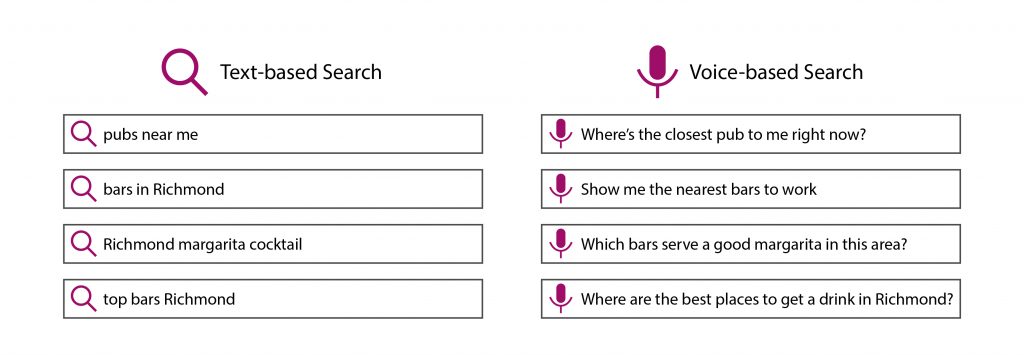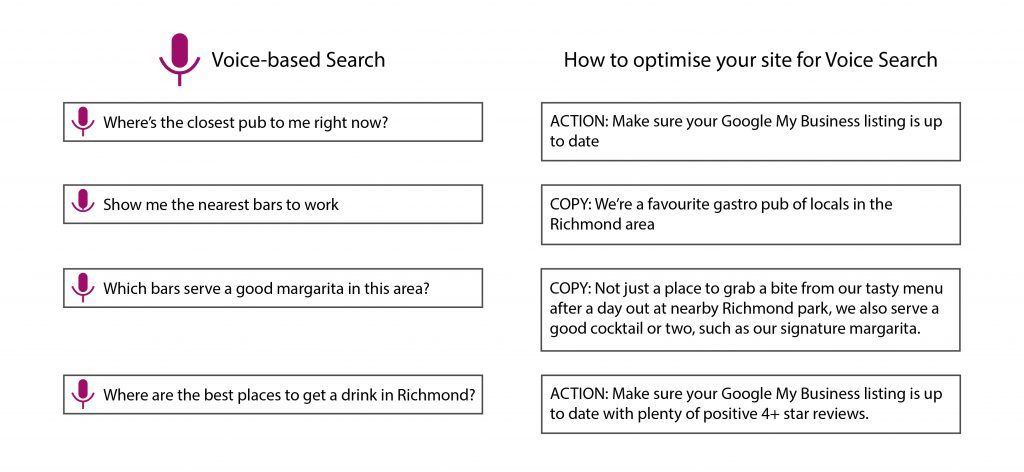Voice Search SEO 101: A Quick Introduction
After scaring ourselves with the looming threat of a robot invasion in the form of Siri, Google, Alexa and possibly even a real-life Sonny (for those of you who enjoyed the 2004 film, I,Robot) we thought with it being one of the top trends for 2018, we’d talk a little bit about voice search SEO (Search Engine Optimisation).
Firstly, a brief introduction into what voice search SEO actually is. Like with regular SEO, it’s about making your website, social media platform, blog etc. as search-friendly as possible so that the little spider-bots that crawl through your content and decide whether it matches a searcher’s query, can label your content as worthy of a higher ranking. Where voice search differs to its text-counterpart though, is in the keywords used to identify whether your content is more suited to the search query than a competitor’s.
You see, when we type our search queries we tend to keep things short, for example, if we’re looking for a local watering-hole on a mobile device, we might type “pubs near me”, but if we were to pick up our phone and start talking to it, it might look a bit more like this:
Spot the difference? You’ll notice that in comparison to the text-based searches, voice-search queries are greater in length and tend to form sentences too. When you use your voice to search, you’re crafting your search query as if you were talking to someone on the street (minus the please and thank you, of course).
Whilst nearly 90% of text searches consisting of 1 – 4 words, voice-based searches average 5 – 10 words in length, so you’re going to have to change your approach of targeting specific keywords.*
Voice search requests are more specific than just a collection of keywords put together – often the case for text-based searches – and this is a huge benefit to us marketers. Why? Well because voice search is a properly formed sentence and not just a jumble of words, a degree of intent emerges. Someone who asks “what are the top ten cameras?” is less likely to be set on buying something in that very moment, than someone who asks “where can I buy a camera?”.
If you can better understand what the customer is looking for, and tailor your content accordingly so you can feature higher up in the SERP, then you’re doing digital marketing right. Contrast this with text-based searches e.g. “top compact cameras” and this type of analytics just isn’t as easily attainable.
By thinking of conversational language as the crème de la crème for voice searches, one way to rank higher in SERPs is to do exactly what the searcher is doing and use conversational language throughout your content.
Using longer keywords and everyday language also enables you to tap into an opportunity to be featured as a direct answer at the top of the SERPs – known as a Google featured snippet. Voice searches also tend to be local – more-so than text-based queries – so businesses would do well to ensure that they’re optimised for local searches.
If you want to see how you might do this then check the table below to see how our watering-hole analogy might work on a page. 
Voice search is an ever-growing trend as we become more and more inclined to talk to our smart devices, rather than just physically interacting with them and so it’s imperative that your business, brand or campaign isn’t missing out just because it’s not voice search friendly.
This is just the tip of the iceberg when it comes to voice search SEO, so if you’re looking for more insights you can either find tips on our Twitter feed, here, or our other insights on digital marketing, here. Alternatively, you can give us a call – voice-to-voice – which you can find the details for on our ‘Contact’ page.
*Source: Search Engine Watch